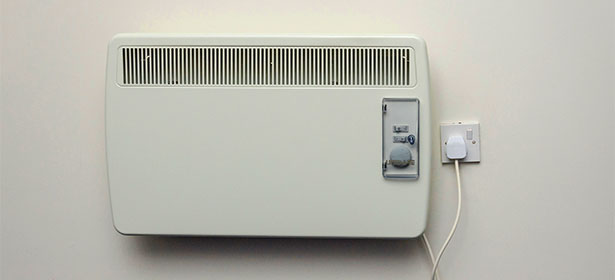
Get a free home energy plan today
Use our home energy planning service, powered by Snugg, to get personalised advice for a more energy-efficient home and lower bills
Start your planBy clicking a retailer link you consent to third-party cookies that track your onward journey. This enables W? to receive an affiliate commission if you make a purchase, which supports our mission to be the UK's consumer champion.

Storage heaters mean you can heat your home with lower off-peak electricity rates.
They are part of an electric heating system, and you'll need a time-of-use tariff (such as Economy 7 or Economy 10) to access cheaper electricity prices.
Keep reading to find out how storage heaters work, how much they cost, and the savings they could generate for you.

Use our home energy planning service, powered by Snugg, to get personalised advice for a more energy-efficient home and lower bills
Start your planStorage heaters store heat generated from cheap night time electricity and release it during the day.
They use electricity to heat up ceramic or clay bricks inside them overnight and release the heat gradually to keep your home warm the next day.
Night storage heaters are designed primarily for homes with time-of-use electricity tariffs, such as Economy 7 or Economy 10. These have cheaper rates for electricity overnight (around 12pm-7am but times vary). This means you can use cheaper off-peak electricity to heat your home during the day.
Some older Economy 7 and Economy 10 meters use Radio Teleswitch Service (RTS) technology. Since 30 June 2025 the signal that supports RTS meters has started to be switched off, which means they will stop working properly. If you have an RTS meter, your supplier should upgrade it to a smart meter for free.
Find out more about the different types of energy tariffs and time of use tariffs with our guides.

Storage heaters vary drastically in price, depending on the type and brand you choose. Basic models start at around £400, but more advanced ones can cost upwards of £700.
More expensive storage heaters tend to be more efficient and, therefore, cost less to run.
Storage heaters must be installed by a qualified electrician. Labour costs for installing a replacement storage heater are usually from about £70 if there is existing wiring, but it will be pricier if it's a new installation or you need new wiring. Prices will vary by location.
We recommend you get at least three quotes because prices vary.
Find a recommended electrician who has been through our rigorous checks by visiting Which? Trusted Traders or using our search tool below.
Even at off-peak rates, electricity is more expensive than gas, so storage heaters are only really cost effective if you don't have mains gas.
In winter, it can cost around £45 a month to run a 1.4kW storage heater. That's based on charging it for seven hours overnight at off-peak rates.* You won't need to charge it for as many hours in the warmer months.
Bear in mind that you'll probably have more than one storage heater to power.
Using your storage heater's boost function adds to heating costs because it uses pricier daytime electricity, rather than stored heat.
* Based on 14.95p/kWh – the average cost of an Economy 7 tariff off-peak rate in June 2025.

There used to be five main types of storage heaters, which varied by the level of control, energy efficiency and price.
However, from 1 January 2018, all newly manufactured storage heaters must have certain features so that they comply with Lot 20, which is part of the European Ecodesign Directive. This essentially means that all storage heaters you can buy now work in the same way.
New electric storage heaters must have a minimum energy efficiency rating of 38% for a heat output above 250W. To meet this, they will often have:
Generally speaking, the more you spend on a storage heater, the more features you'll get.
Most modern models have built-in thermostats and many also have ‘fan-assist’ to help spread the heat around your home. Also, look out for high-heat retention casing and ‘intelligent charge’.
If you've had storage heaters in your home for a while, they might be one of the following:
Common useful storage heater features include:
Manual storage heaters were the cheapest to buy, but are very basic and don't allow much control over the heat output. This can lead to wasted energy and overheated rooms.
Because of this, manual storage heaters have been phased out and replaced by more efficient, automatic models. An automatic storage heater will save you money in the long run, but usually cost more upfront.

Need an extra burst of heat? We reveal the best electric heaters.
If you have solar panels, you could use the electricity they generate to charge your storage heaters during the day so you still have warmth in the evening.
Find out more: are solar panels worth it?
Some older storage heaters, typically those produced before 1974, used asbestos to reduce the risk of fire. If damaged, they may release asbestos dust and fibres.
Breathing this in can cause damage to your lungs and contribute to a range of cancers.
If you have an old storage heater in your home and are concerned that it contains asbestos, contact the manufacturer to find out.
If you discover that your storage heater contains asbestos, contact your local council to organise the heater’s safe removal.
Use our free Home Energy Planning Service to build a personalised plan to make your home more energy efficient!
Start your plan